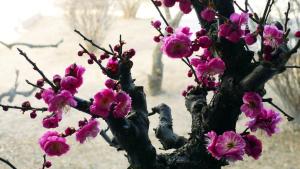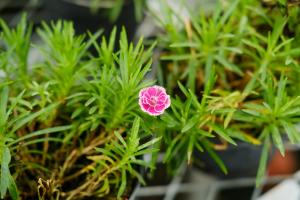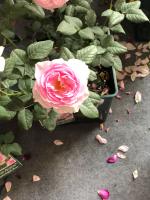What are the Invasive Plants in Joshua Tree Park?
Joshua Tree National Park is a stunning wilderness area that is home to a diverse array of plant and animal life. However, in recent years, the park has been threatened by the invasion of non-native species of plants. These invasive plants can cause significant damage to the park's ecosystem, and it is important for visitors to be aware of them.
What is an Invasive Plant?
An invasive plant is a species that is not native to a particular region and has been introduced there by human activity. Invasive plants can take over native habitats, outcompete native species for resources, and disrupt the natural balance of an ecosystem. They can spread rapidly and are often difficult to control.
The Invasive Plants in Joshua Tree Park
There are several invasive plant species that are causing problems in Joshua Tree National Park. These include:
Sahara mustard (Brassica tournefortii)
Sahara mustard is a plant native to North Africa that was introduced to California in the early 1900s. It has become a major problem in Joshua Tree Park, where it spreads rapidly, displacing native plants and altering the park's ecosystem.
Tamarisk or salt cedar (Tamarix spp.)
Tamarisks are salt-tolerant trees that were introduced to California in the late 1800s as an ornamental plant. They have since spread throughout the southwestern United States, including Joshua Tree Park. They can grow in dense stands that outcompete native vegetation and alter the hydrology of the park's streams and rivers.
Cheatgrass (Bromus tectorum)
Cheatgrass is a non-native grass that was inadvertently introduced to North America in the late 1800s. It has become widespread throughout the western United States, including Joshua Tree Park. Cheatgrass can create a fire hazard in the park, as it dries out quickly in the summer and can ignite easily.
The Threat of Invasive Plants
Invasive plants pose a significant threat to Joshua Tree National Park's ecosystem. They can cause a decline in native biodiversity, alter the structure and function of ecosystems, and impact the ability of wildlife to find food and shelter.
In addition, some invasive plants, such as Sahara mustard, have the potential to alter the natural fire regime of the park. By creating a dense layer of vegetation, these plants can increase the intensity and spread of fires, which can have devastating effects on the park's ecosystems.
What Can be Done?
The management of invasive plants is a complex task that requires a combination of methods. In Joshua Tree Park, the National Park Service is using a variety of strategies to try to control invasive plants. These include:
Physical removal of invasive plants
Herbicide application to selectively kill invasive plants
Restoration of native vegetation to compete with invasive species
Monitoring of invasive plant populations to track progress and adjust management strategies as needed
Visitors to the park can also help by staying on designated trails and avoiding disturbing vegetation. In addition, visitors can report sightings of invasive plants to park rangers, which can help with the management of these species.
Conclusion
The invasive plants that are threatening Joshua Tree National Park are a serious concern for the park's managers and visitors. By being aware of the problem and taking action to prevent the spread of invasive plants, we can help to protect this beautiful wilderness area for future generations.

 how many times do yo...
how many times do yo... how many planted tre...
how many planted tre... how many pine trees ...
how many pine trees ... how many pecan trees...
how many pecan trees... how many plants comp...
how many plants comp... how many plants can ...
how many plants can ... how many plants and ...
how many plants and ... how many pepper plan...
how many pepper plan...





























